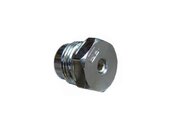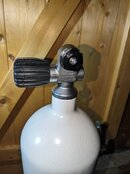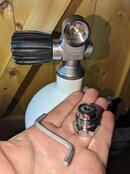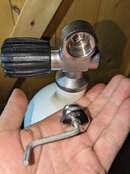I met a lady at aowd course, while assembling her stuff and had a short chat with her and her instructor next to her.
She had a single cylinder with dual DIN valve, and just one first stage reg. So far all good.
What catched my eye was the other valve had no DIN plug (such as on the attached photo) that would protect the air in the cylinder from a freeflow in case of accidental opening the valve during the dive.
I said I would never dive the cylinder without protecting the second valve if has no regulator mounted.
The instructor argued this is fine, because the buddy will shut off the valve in case of accidental opening. According to him, the plug is just for transporting cylinders in the car to protect agains freeflow.
Who was right?
She had a single cylinder with dual DIN valve, and just one first stage reg. So far all good.
What catched my eye was the other valve had no DIN plug (such as on the attached photo) that would protect the air in the cylinder from a freeflow in case of accidental opening the valve during the dive.
I said I would never dive the cylinder without protecting the second valve if has no regulator mounted.
The instructor argued this is fine, because the buddy will shut off the valve in case of accidental opening. According to him, the plug is just for transporting cylinders in the car to protect agains freeflow.
Who was right?








